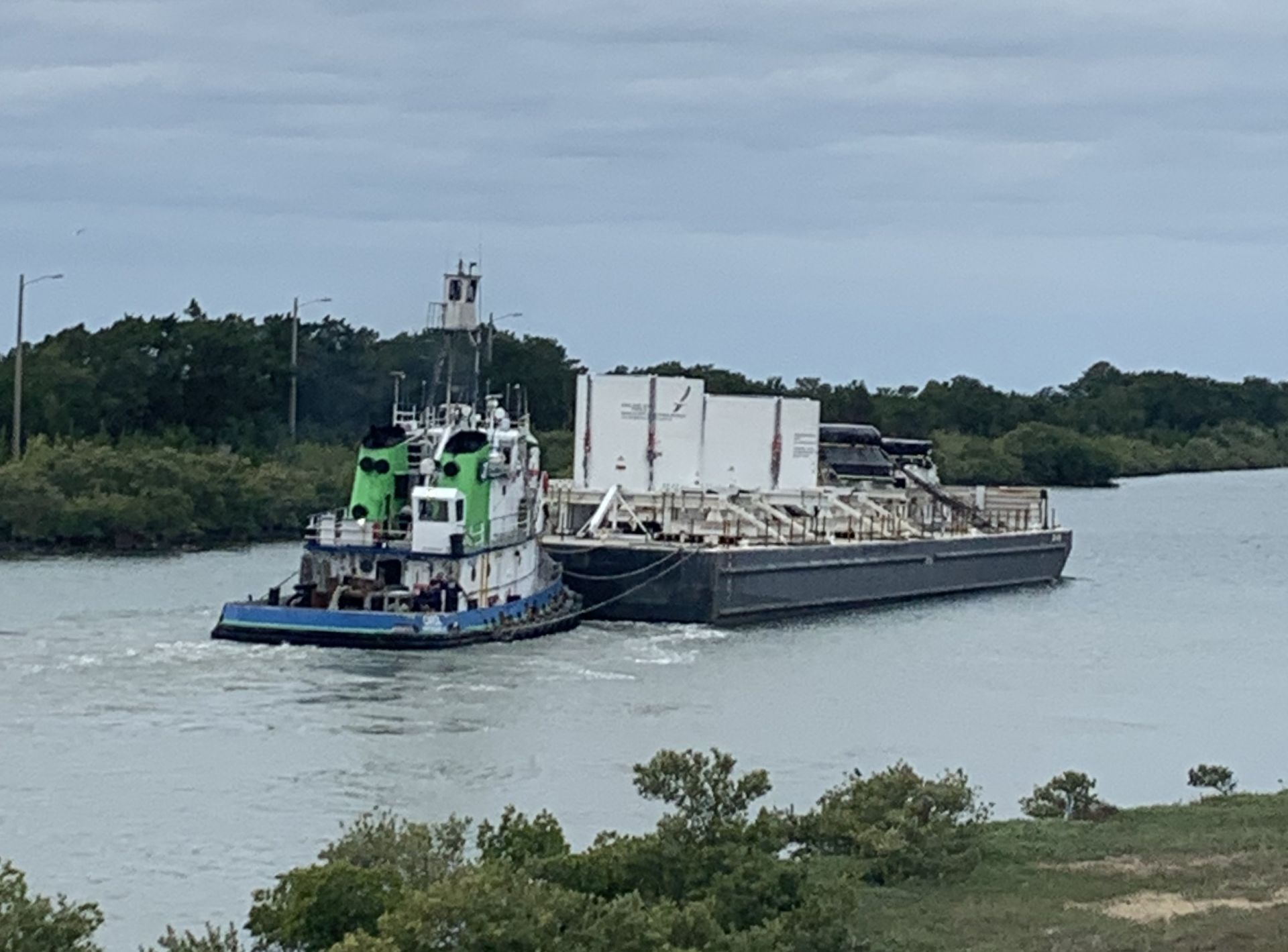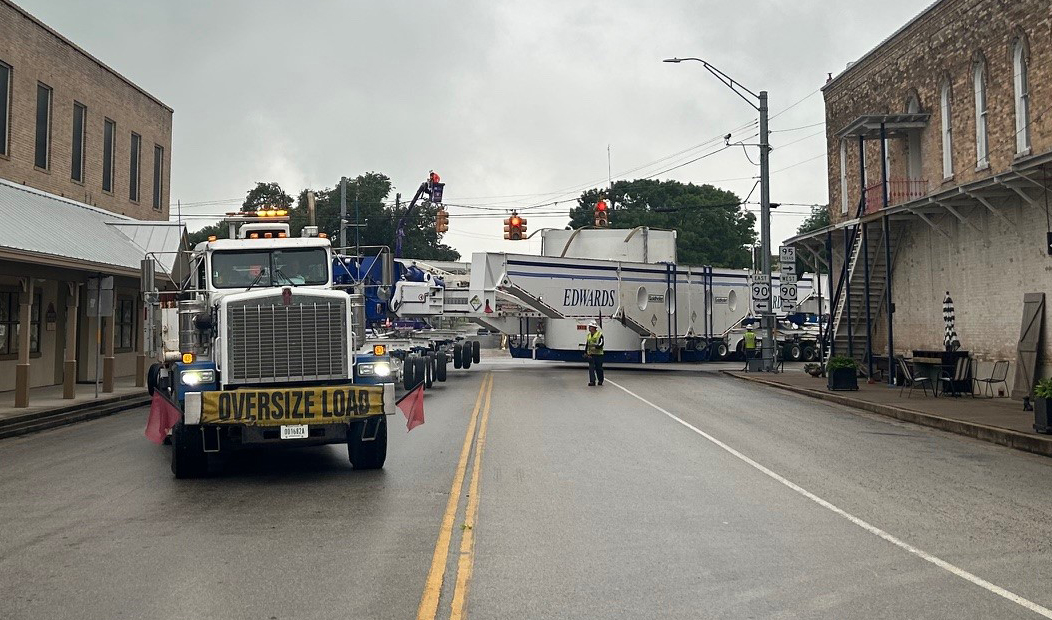Crystal River 3 Segmentation & Transport

For the Crystal River 3 accelerated decommissioning project, Orano Decommissioning Services (ODS) applied its patented Optimized Segmentation strategy to plan and execute the removal, packaging, off-site transportation, and disposal or onsite storage of all the reactor vessel and internals components in a total of only two Class A industrial type large containers, one Class C Type B large container, and two GTCC Rad Waste Canisters (excluding the head and the secondary waste).
Efficient Optimized Segmentation

Figure 2: The solid, LDCC-filled RV packed with waste was subsequently segmented into three large sections (top, middle, bottom), consistent with the optimized waste distribution plan.
Orano DS’s patented Optimized Segmentation process was successfully implemented for the first time at the Crystal River Unit 3 (CR3) decommissioning project in Florida.
This process is an innovative approach for dismantling commercial and research nuclear reactors to reduce the volume of waste for disposal and the amount of segmentation work on the reactor structures, which achieves substantial benefits in reducing the overall execution schedule, project risk, worker dose, and cost.
Using the Optimized Segmentation process at CR3 avoided the time- and resource-intensive process of packaging components into numerous standardized waste containers and significantly reduced the required segmentation activities. This also greatly reduced the multiple waste shipments of all non-Greater-Than-Class-C (GTCC) waste from the Reactor Vessel Internals (RVI) and the Reactor Vessel (RV). Instead, only four custom-designed packages were required to dispose of the radioactive Low-level Waste (LLW) generated from the removal of the RV and RVI components.
The non-GTCC RVI components were segregated and repacked (re-introduced) inside the RV using a precisely engineered placement strategy based on each component’s waste characterization. The repackaged RVI inside the RV were then immobilized using Low-Density Cellular Concrete (LDCC), specifically engineered to achieve the package requirements, our ALARA goal, and transportation limits.
Each section was packaged and shipped individually in tailor-made containers designed by Orano (top and middle package) or by using custom-designed supersacks (bottom package) to safely transport and dispose of the waste in compliance with relevant regulations (NRC for Type B shipment, DOT for Industrial Package) and the disposal site’s Waste Acceptance Criteria.
Transport by Sea & Land of Just Four RV Disposal Packages

Figure 3: The entire reactor with its embedded internals shipped in four packages across the Gulf of Mexico.

Figure 4: The approved package transport route included some precise maneuvering.
As planned, only the middle RV section (of the three segmented RV sections) required an NRC-approved Type B package for shipment in accordance with 10 CFR Part 71. The optimized waste characteristics in the two remaining reactor vessel segments – the bottom and top sections – as well as the reactor head, only required packaging to comply with the DOT Industrial Package regulations (49 CFR 173).
The four packages were handled at the CR3 site using heavy load capacity Self-Propelled Modular Transporters. They were then loaded and secured on a single barge for transportation from Florida’s west coast to Texas across the Gulf of Mexico. The packages were then separately transported west by road across the State of Texas to the Waste Control Specialists (WCS) disposal site in Andrews, Texas.
Disposal and NRC Package approvals can be routine in the future due to this first successful project precedence. For waste packages going to WCS, the transportation route between a Texas port to the WCS facility for Orano’s optimal packages can be used as a model for permitting of all future shipments. Transportation routes to the EnergySolutions Clive Disposal Facility can be permitted in the future, too.
In addition to the four packages described above, there were ten (10) additional large component shipments which contained components from the CR3 Reactor Coolant System: Pressurizer (x1), Reactor Coolant Pumps (x4) and Motors (x4); and the RV Integrated Head Assembly: Control Rod Drives and Service Structure (x1). These components were transported by rail to WCS in compliance with DOT Industrial Package regulations.
Finally, Orano worked closely with the WCS team to dispose of all shipped components. All components met the Exempt Disposal Criteria including the Pressurizer, except (1) RVCH, (2) RV Top Package and (3) RV Bottom Package in which these three components were classified as Class A Disposal, and (4) RV Middle Package which was classified as Class B/C Disposal.
Project Outcomes & Success
Orano DS considers the Optimized Segmentation process a significant success in the evolution of decommissioning strategy. Within the first three years of project initiation, the CR3 RCS, RV and RVI had been removed from the containment building and packaged for shipment. The RV and RVI LLW components had been packaged into only six packages.
The transportation of the four major RV/RVI packages to the WCS facility in Andrews, Texas, for final disposal closed the final chapter in this first Optimized Segmentation story. We have demonstrated the ability to successfully plan and implement a strategy to remove, segregate, and replace the RVI into the RV to achieve optimal waste disposal efficiency. We have also demonstrated the ability to design, license, fabricate, load, and transport the Type B special packages necessary to achieve the full value of the Optimized Segmentation philosophy. The success of this work sets the stage for many future Optimized Segmentation decommissioning projects.

